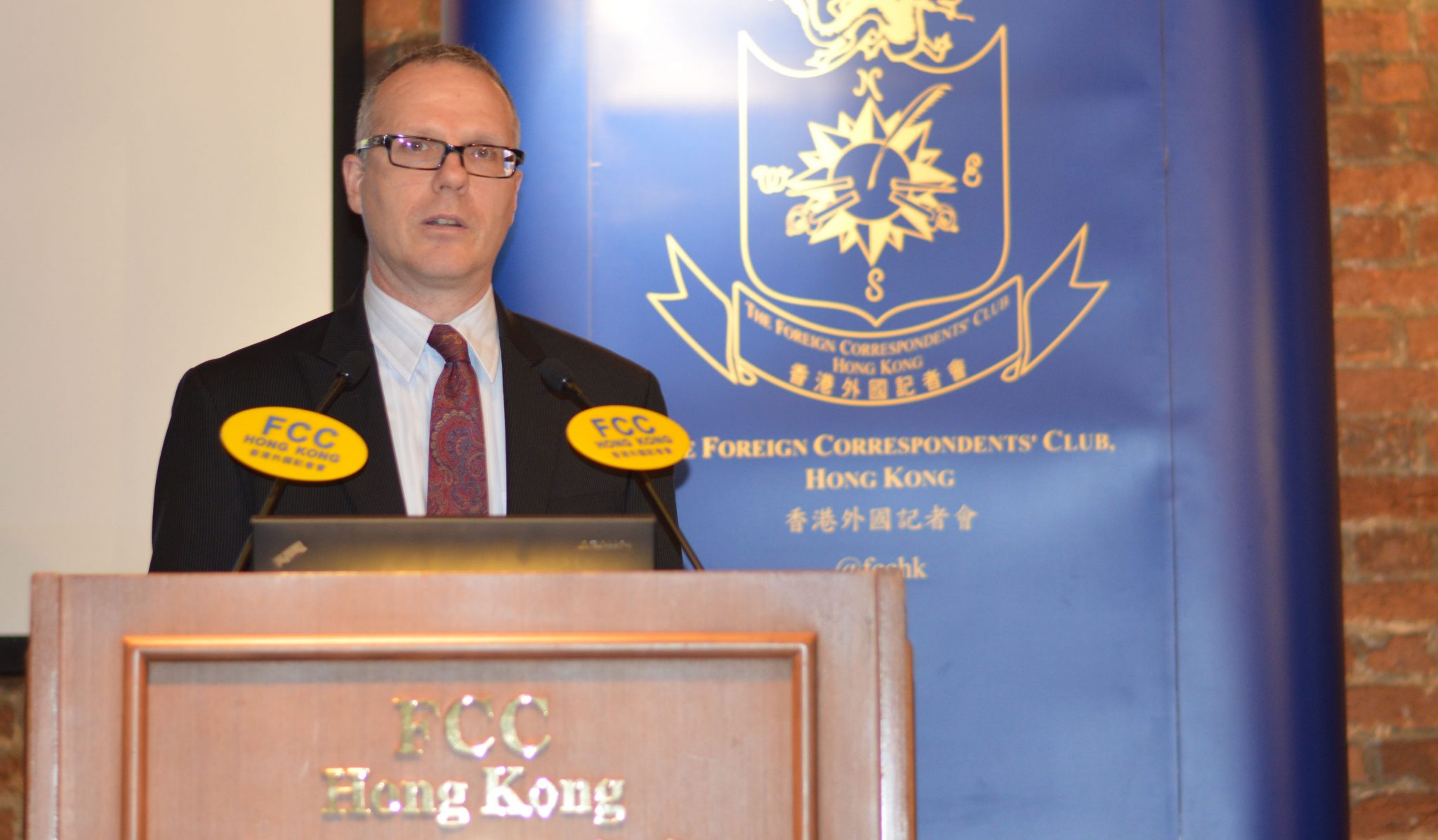
Journalists and diplomats: The challenges of reporting side by side from the front line
The close but often fraught relationship between journalists and diplomats on the front line of war was discussed by diplomat and author Dante Paradiso at the March 30 club lunch.
The two have very similar roles in that they are the bearers of first hand information on what is happening on the ground, he said. However, they are driven by two very different objectives: the journalist is part of a business model, whereas the diplomat is informing policy process.
Paradiso, author of The Embassy: A Story of War and Diplomacy, explained that while journalists are obviously keen to get breaking news out to their editors, then the world, this is often at odds with the way a diplomat – who is passing information to the government’s security services in order to make longer term strategy decisions in war torn areas – operates.
If you’re witnessing a human rights abuse or state-sponsored terrorism, your reporting can force decision-making.
But the relationship is also beneficial to both sides: “We exchange information… We can get messages out through the media, and the media can get headlines from us. There’s a transactional nature to these exchanges,” Paradiso said.
 Dante Paradiso revealed the ups and downs in the relationship between journalist and diplomat in war zones. Photo: Sarah Graham
Dante Paradiso revealed the ups and downs in the relationship between journalist and diplomat in war zones. Photo: Sarah GrahamThe continuous flow of information from both the press and people working the policy is vital. The exchange of information itself between the two can be imperative, he added. “If you’re witnessing a human rights abuse or state-sponsored terrorism, your reporting can force decision-making.”
He said in highly intense crises, for example bullets in the street, often journalists and diplomats work quite closely together. There was also an element of responsibility in keeping reporters safe, Paradiso said, “the ability to exchange information about physical safety”. This would often lead to shelter being provided for journalists in danger.
Drawing on experiences from Liberia, Afghanistan and other conflicts, Paradiso highlighted the need for operational safety versus the media’s need for breaking news. He told how in some circumstances the need to report what was happening at a particular moment could often put troops and journalists in danger. For example, the shelling of a U.S. compound is big news, he said, but in reporting this the enemy was being given confirmation that they’d hit their target, so could continue the attack.
Paradiso concluded that the dynamic between journalists and diplomats was incredibly important for physical transparency, safety and advocacy when it came to reporting the facts of events in war zones, both to news room editors and a the chain of command of a diplomat.





















